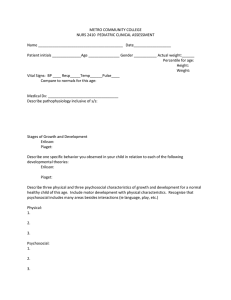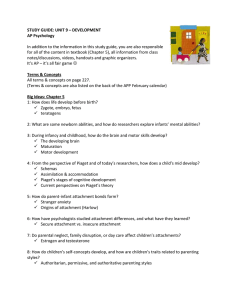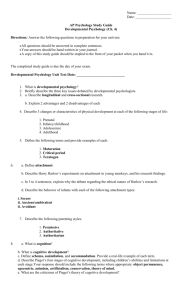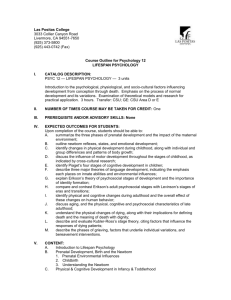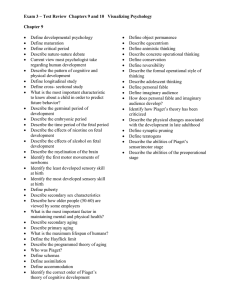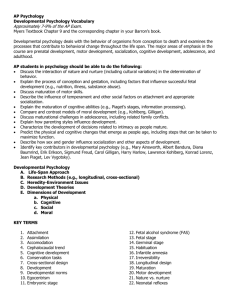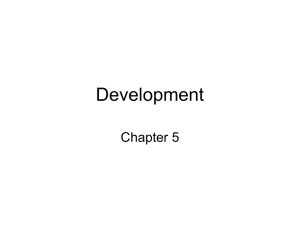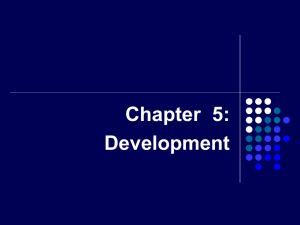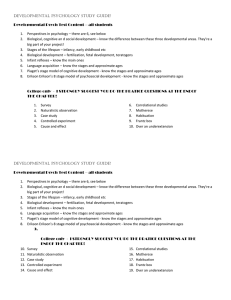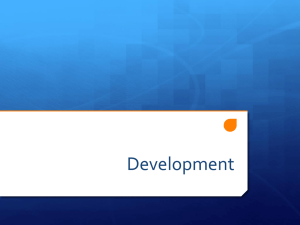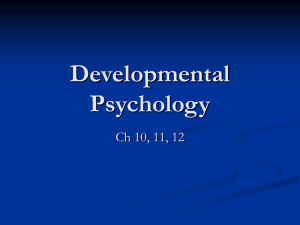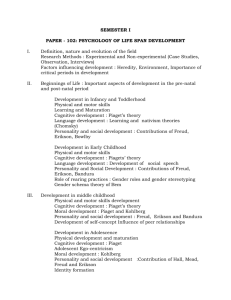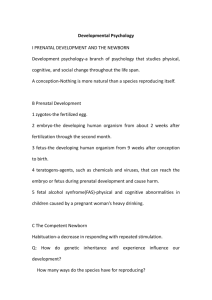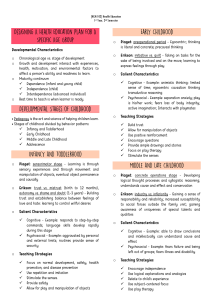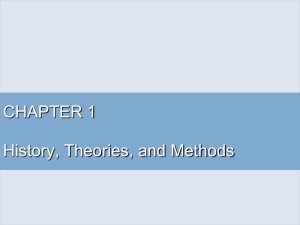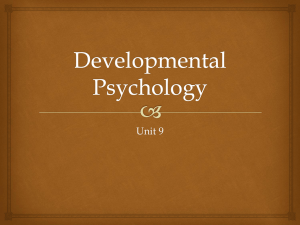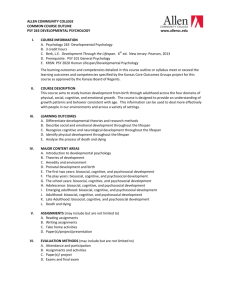Chapter 9: Lifespan Development
advertisement
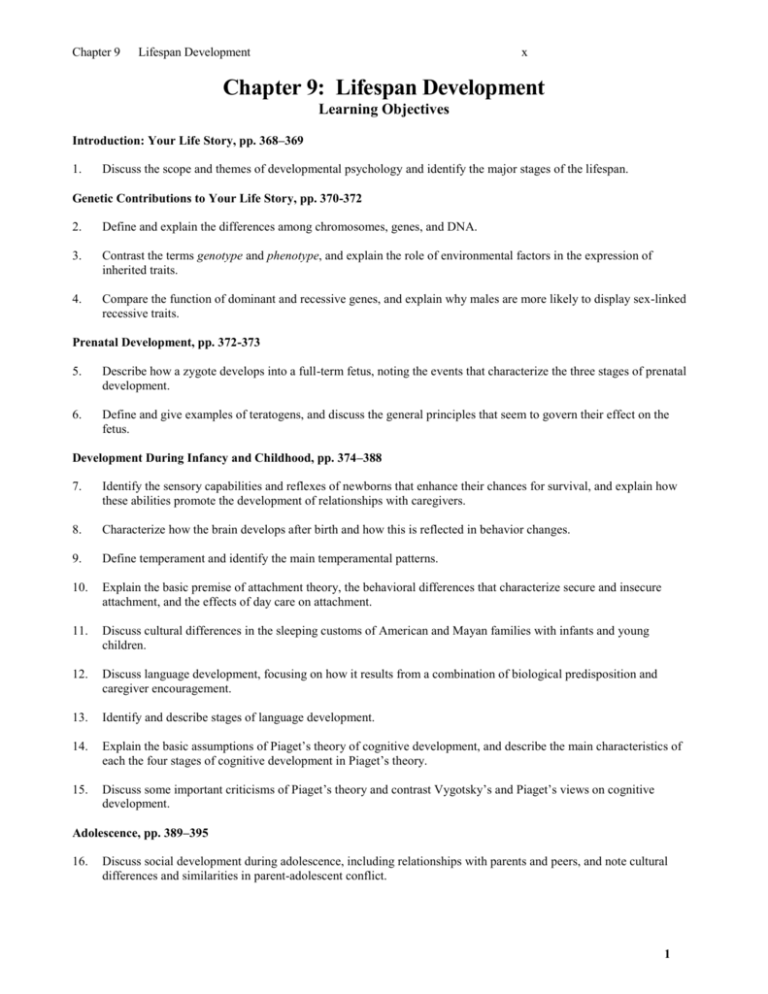
Chapter 9 Lifespan Development x Chapter 9: Lifespan Development Learning Objectives Introduction: Your Life Story, pp. 368–369 1. Discuss the scope and themes of developmental psychology and identify the major stages of the lifespan. Genetic Contributions to Your Life Story, pp. 370-372 2. Define and explain the differences among chromosomes, genes, and DNA. 3. Contrast the terms genotype and phenotype, and explain the role of environmental factors in the expression of inherited traits. 4. Compare the function of dominant and recessive genes, and explain why males are more likely to display sex-linked recessive traits. Prenatal Development, pp. 372-373 5. Describe how a zygote develops into a full-term fetus, noting the events that characterize the three stages of prenatal development. 6. Define and give examples of teratogens, and discuss the general principles that seem to govern their effect on the fetus. Development During Infancy and Childhood, pp. 374–388 7. Identify the sensory capabilities and reflexes of newborns that enhance their chances for survival, and explain how these abilities promote the development of relationships with caregivers. 8. Characterize how the brain develops after birth and how this is reflected in behavior changes. 9. Define temperament and identify the main temperamental patterns. 10. Explain the basic premise of attachment theory, the behavioral differences that characterize secure and insecure attachment, and the effects of day care on attachment. 11. Discuss cultural differences in the sleeping customs of American and Mayan families with infants and young children. 12. Discuss language development, focusing on how it results from a combination of biological predisposition and caregiver encouragement. 13. Identify and describe stages of language development. 14. Explain the basic assumptions of Piaget’s theory of cognitive development, and describe the main characteristics of each the four stages of cognitive development in Piaget’s theory. 15. Discuss some important criticisms of Piaget’s theory and contrast Vygotsky’s and Piaget’s views on cognitive development. Adolescence, pp. 389–395 16. Discuss social development during adolescence, including relationships with parents and peers, and note cultural differences and similarities in parent-adolescent conflict. 1 Chapter 9 Lifespan Development x 17. Discuss the important role that adolescent identity formation plays in Erikson’s psychosocial theory of development, and describe the other stages of psychosocial development in Erikson’s theory. 18. Describe Kohlberg’s theory of moral development, noting the stages and levels, and explain how moral reasoning is influenced by gender and culture. Adult Development, pp. 396–399 19. Explain the major milestones in physical and social development during adulthood, and describe changes in the composition of American families and households from 1970 to the present. Late Adulthood and Aging, pp. 399–401 20. Characterize physical development in late development, and discuss the accuracy of U.S. stereotypes of old age. 21. Describe Schaie’s longitudinal research on the effects of aging on cognitive and intellectual abilities. 22. Discuss social development in late adulthood, and explain the activity theory of aging and the final stage in Erikson’s psychosocial theory. The Final Chapter: Dying and Death, pp. 402–403 23. Describe Kübler-Ross’s stage theory of dying, and assess its validity. Application: Raising Psychologically Healthy Children, pp. 403–405 24. Explain the effects of authoritarian, permissive, and authoritative parenting styles on children, and list several suggestions that promote authoritative parenting. 2

